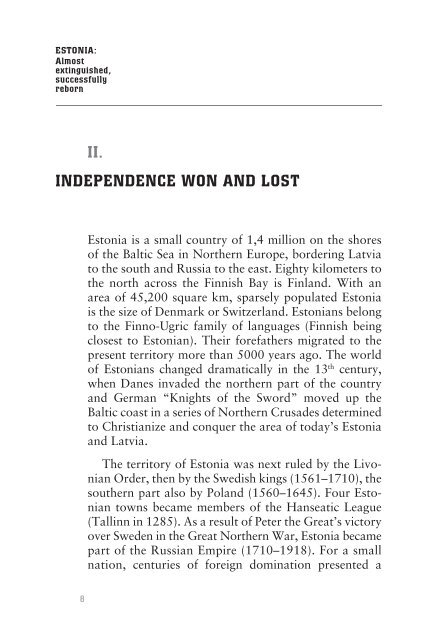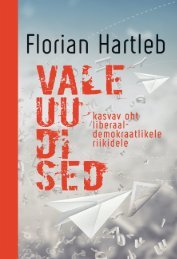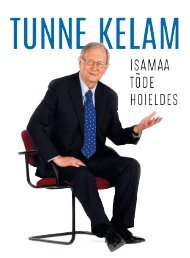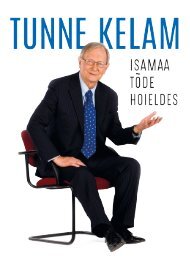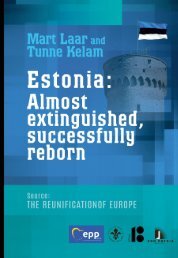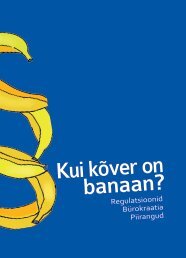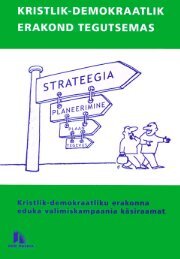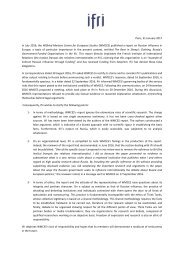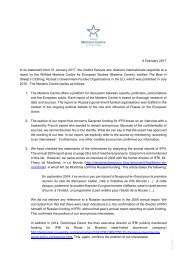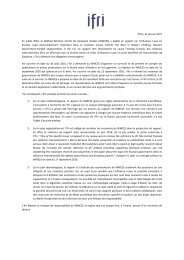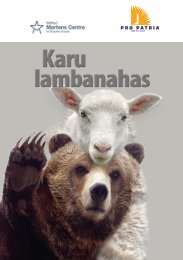Estonia: Almost extinguished, successfully reborn
The following text is the shortest possible review to help inform friends and guests from abroad about Estonia’s experience with foreign occupation and totalitarianism as well as its road to peacefully re-establishing national inde-pendence on the basis of democracy. Tunne Kelam Member of the European Parliament
The following text is the shortest possible review to help inform friends and guests from abroad about Estonia’s experience with foreign occupation and totalitarianism as well as its road to peacefully re-establishing national inde-pendence on the basis of democracy.
Tunne Kelam
Member of the European Parliament
Create successful ePaper yourself
Turn your PDF publications into a flip-book with our unique Google optimized e-Paper software.
ESTONIA:<br />
<strong>Almost</strong><br />
<strong>extinguished</strong>,<br />
<strong>successfully</strong><br />
<strong>reborn</strong><br />
II.<br />
INDEPENDENCE WON AND LOST<br />
<strong>Estonia</strong> is a small country of 1,4 million on the shores<br />
of the Baltic Sea in Northern Europe, bordering Latvia<br />
to the south and Russia to the east. Eighty kilometers to<br />
the north across the Finnish Bay is Finland. With an<br />
area of 45,200 square km, sparsely populated <strong>Estonia</strong><br />
is the size of Denmark or Switzerland. <strong>Estonia</strong>ns belong<br />
to the Finno-Ugric family of languages (Finnish being<br />
closest to <strong>Estonia</strong>n). Their forefathers migrated to the<br />
present territory more than 5000 years ago. The world<br />
of <strong>Estonia</strong>ns changed dramatically in the 13 th century,<br />
when Danes invaded the northern part of the country<br />
and German “Knights of the Sword” moved up the<br />
Baltic coast in a series of Northern Crusades determined<br />
to Christianize and conquer the area of today’s <strong>Estonia</strong><br />
and Latvia.<br />
The territory of <strong>Estonia</strong> was next ruled by the Livonian<br />
Order, then by the Swedish kings (1561–1710), the<br />
southern part also by Poland (1560–1645). Four <strong>Estonia</strong>n<br />
towns became members of the Hanseatic League<br />
(Tallinn in 1285). As a result of Peter the Great’s victory<br />
over Sweden in the Great Northern War, <strong>Estonia</strong> became<br />
part of the Russian Empire (1710–1918). For a small<br />
nation, centuries of foreign domination presented a<br />
8


